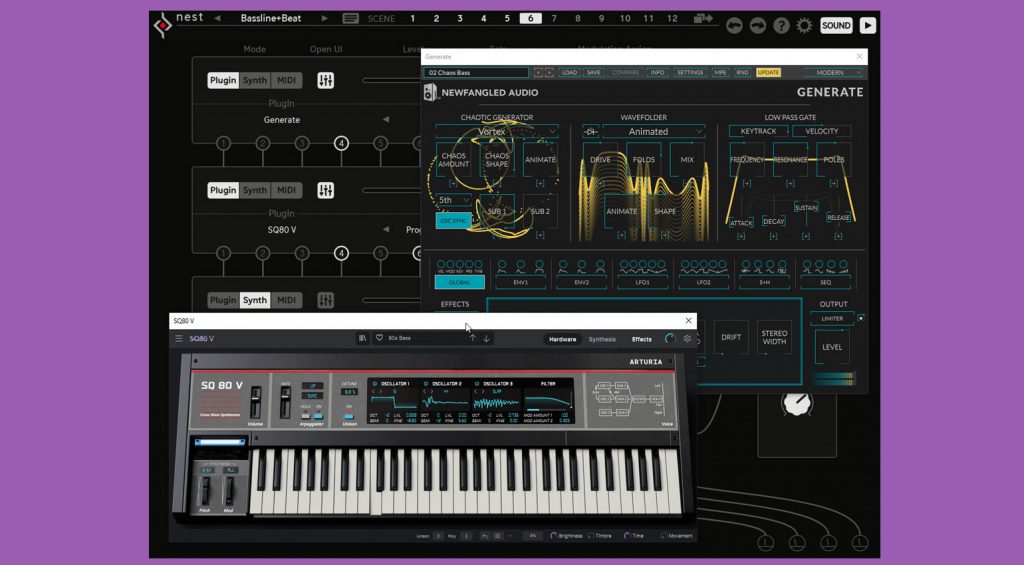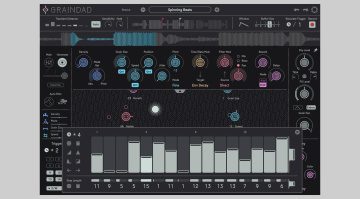Sugar Bytes Nest: Logic and maths based software MIDI sequencer
Nest is slightly baffling and deeply intriguing, using rules and logic to generate pitch, gate and modulations in a stylish modular interface. Things are going to get complicated.
Nest
My first thought when I loaded the demo was “whaaaat?” You’re faced with a page full of all those modules that you don’t really know how to use in your modular system: Logic gates, Clocks, Shift Registers, Comparators and Sample & Hold. I feel like I’m back in The Signal State game again trying to wrap my head around a modular logic puzzle. You hit the Play button and click through a couple of presets and it comes alive with patch cables and flashing LEDs but more importantly, a remarkable amount of music is being generated – but how?
Let’s see what we can find out. The trailer is very impressive, so let’s start there.
You are currently viewing a placeholder content from YouTube. To access the actual content, click the button below. Please note that doing so will share data with third-party providers.
The basic idea is that Nest is a rule-based modular style MIDI sequencer. It has 20 modules inspired by classic integrated circuits (I like the idea that ICs can be inspirational) and the sound source can be an internal synth, MIDI output or VST instruments – that’s rather awesome.
The modules can be used to generate and process triggers and numbers. The triggers result in percussive noises being played, the numbers can be used for pitch and modulation information. You can generate up to 8 MIDI voices and 4 lanes of automation routed to up to 4 sound generators, so you can use a few voices for drums, combine for chords and send out to hardware synths. There’s an internal reverb and individual outputs for routing into your DAW.
Each patch can contain 12 scenes which are essentially patches within patches for variations and changes and the building of tracks. You can do the whole thing in here, it’s nuts!
Basics
If, like me, you have no idea where to even start Sugar Bytes has some useful tutorial videos. The first one is nearly half an hour long (see below) but it’s really good, very clear and after a few minutes you are soothed into the idea that you could work this complex mathematical monster.
The way things work between the patching page and the sound page is quite beautiful. The interface and the workflow is really nice and remarkably clear within the complexity of the functions. It’s going to take a lot of video watching and small steps for me to move on from wiring the Sequencer module to a MIDI voice synth and patching that to a synth, which I just accomplished (go me!) because I have no idea what to do next.
So, my advice is to download the demo, be inspired by the preset projects and see if this is for you. Because if it is then this could be a revolutionary approach to sequencing on a computer.
Sugar Bytes Nest is available now for €99 and runs standalone or as a VST2, AU and AAX plugin on macOS and Windows.
More information from Sugar Bytes
Video
You are currently viewing a placeholder content from YouTube. To access the actual content, click the button below. Please note that doing so will share data with third-party providers.














